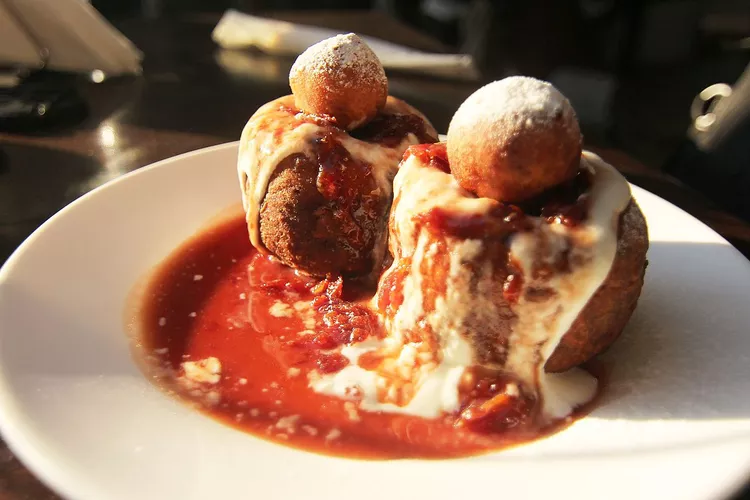Summary
A highlight of any trip to a foreign country is discovering its unique cuisine. There’s an old saying that the food is the heart of the country. It’s an adventure that requires only some suggestions of good traditional restaurants and a desire to get to know the country beyond its most famous tourist spots.
Traditional Romanian Cuisine
The traditional food of Romania reflects the country’s roots and has been influenced by various cultures, including Turkish, Hungarian, Slavic, and Austrian. Consequently, these dishes have over time developed into what is now recognized as traditional Romanian cuisine, celebrated alongside the oldest foods in the country.
Trademark Dishes
Traditional Romanian dishes are rich in meat but often include vegetables or fruits as well. One of the most iconic dishes is sarmale, cabbage rolls stuffed with spiced pork and rice, which is considered the national dish. Furthermore, sausages and stews, such as tocanita, are among the most common dinner options. Muschi poiana features mushroom- and bacon-stuffed beef served in a flavorful puree of vegetables and tomato sauce. Additionally, you may try traditional fish dishes, such as the salty grilled carp called s
Soups, Appetizers, and Side Dishes
Soups—made with or without meat, or even fish—are a staple in Romanian cuisine and typically serve as the first course of a meal. One popular option is Zama, a green bean soup with chicken, parsley, and dill. You might also find pilaf, moussaka, stuffed peppers, and hearty casseroles featured prominently on menus.
Desserts
Traditional Romanian desserts are reminiscent of baklava, while other pastries resemble Danishes with a cheese filling. Crepes filled with various toppings are also common on Romanian dessert menus. Notably, Papanasi is a local specialty composed of fried dough, cottage cheese, jam, and cream, making it a must-try for dessert lovers.
Holiday Dishes
During holidays, the people of Romania indulge in special dishes, much like in other countries across Eastern Europe. For instance, at Christmas, it is common to slaughter a pig and use the fresh meat to prepare bacon, sausage, and black pudding dishes. Organs are also incorporated into meals. At Easter, a sweetened cheese cake, known as pasca, is traditionally served.
Polenta
Polenta appears in many Romanian recipes as a hearty and versatile side dish or as an ingredient in more complex dishes. This cornmeal pudding has been a staple in the region for centuries, dating back to Roman times when soldiers relied on it as sustenance. Polenta can be baked, served with cream or cheese, fried, shaped into balls, or made into cakes. Known locally as Mamaliga, it remains a beloved part of both home cooking and restaurant menus.




